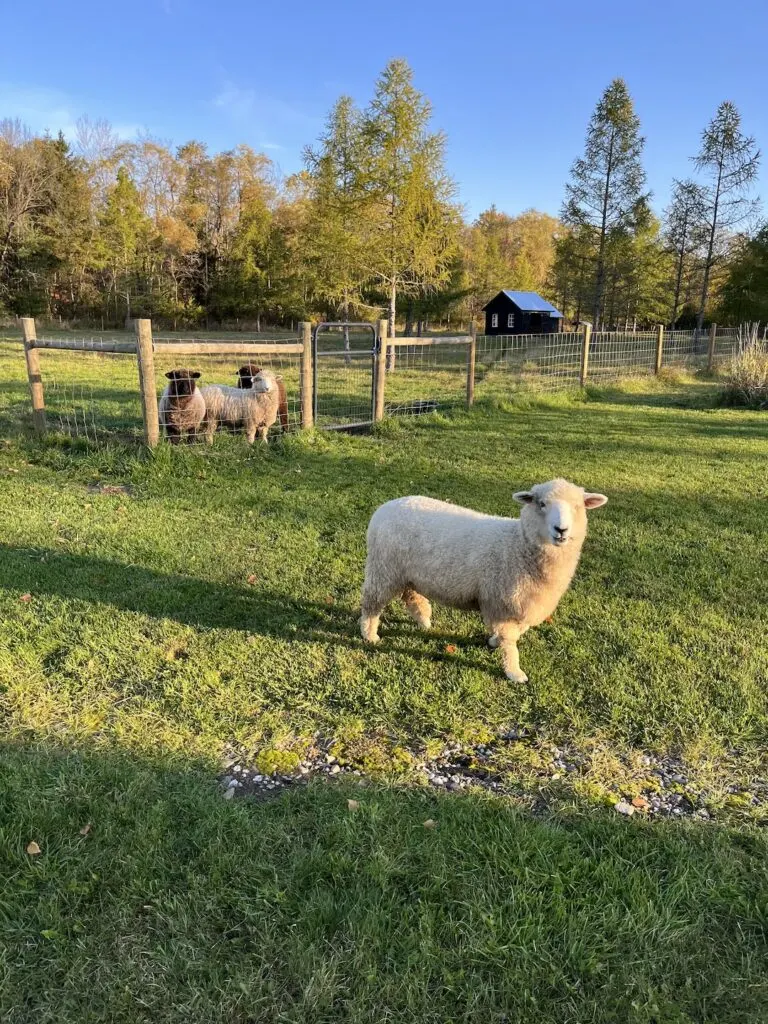A woven wire fence is only as good as its ability to stand and that means learning to brace a fence corner. When I first put in the sheep pasture fence, I cemeted in my three posts for each H-brace and called it a day. Yeah, that’s wrong.
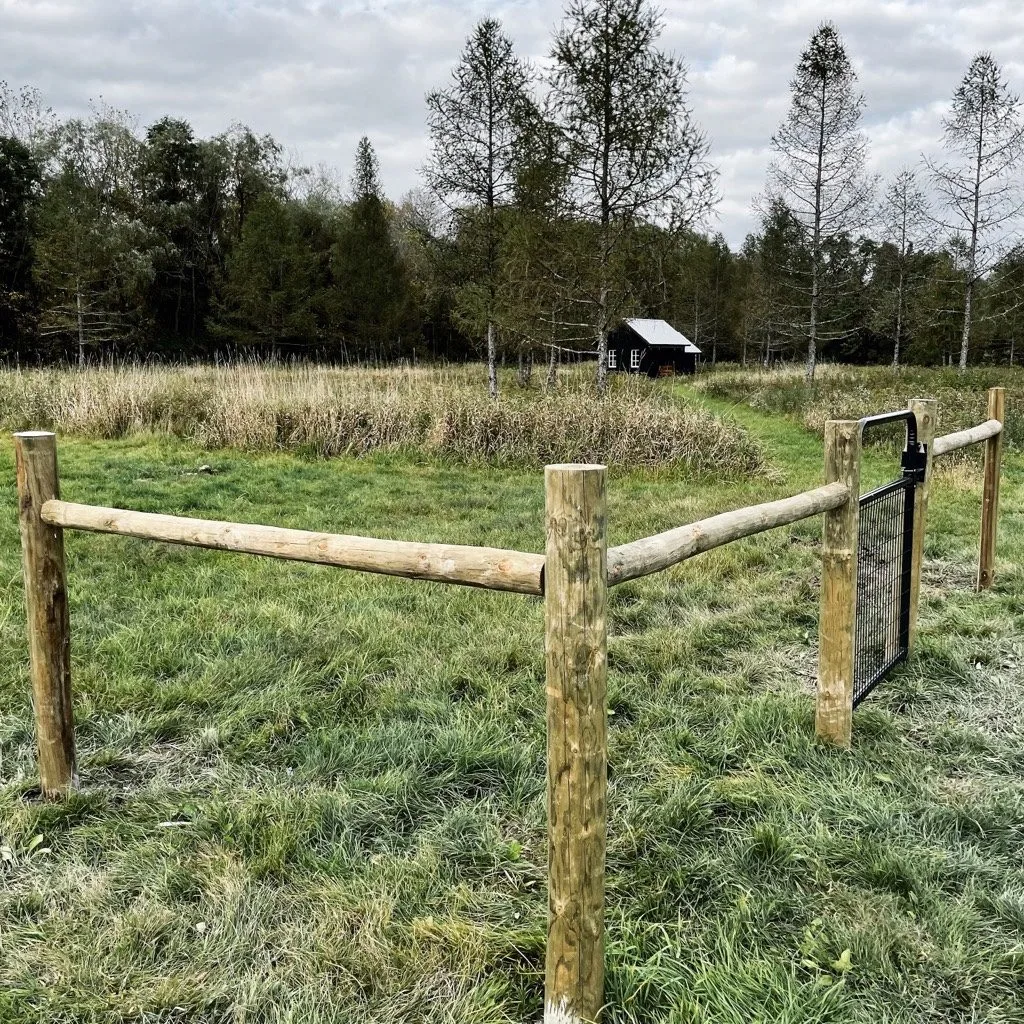
Even though this isn’t a high tension fence and my posts are 12′ apart, cemented H-brace corners are not enough to stop the fence from pulling the corners in.
Within a year my gate was already having issues because the post to the right (which had all the tension) was being pulled towards the far end of the field.
The solution is to use a wire to diagonally brace the top of the tension side against the bottom of the corner post.
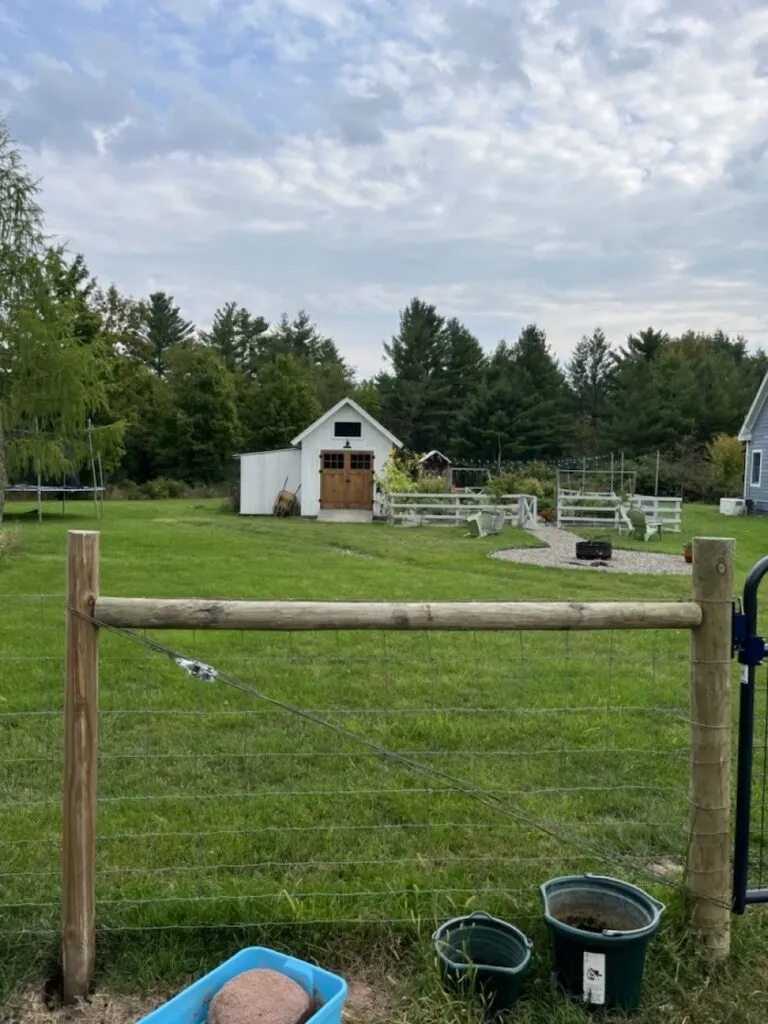
Over the course of adding diagonal wire bracing to the corners of my fence I used a few different strainers and wire gauges but here is the basics of what you need.
Materials and tools needed to brace a fence corner post
- 10 – 12.5 gauge wire
- Strainer
- Tightening tool (like this)
- Fence Staples
- Pliers
- Hammer
The goal of the diagonal wire brace is to stop the top of the fence from being pulled towards the opposite end that is providing tension. You do that by forcing it to remain fixed to the bottom of the corner post.
Steps to brace a fence corner post
We start by adding a staple to the top of the far post and the bottom of the corner post. The staples act as a guide for the wire to run through. You could also notch the post but I found the staple method worked just fine.
A little tip here is to either drive a second staple all the way in or hang it on the first so that the wire slides against the staple, not the post. The smaller surface area should act like an ice skate and reduce the amount of friction when tightening.
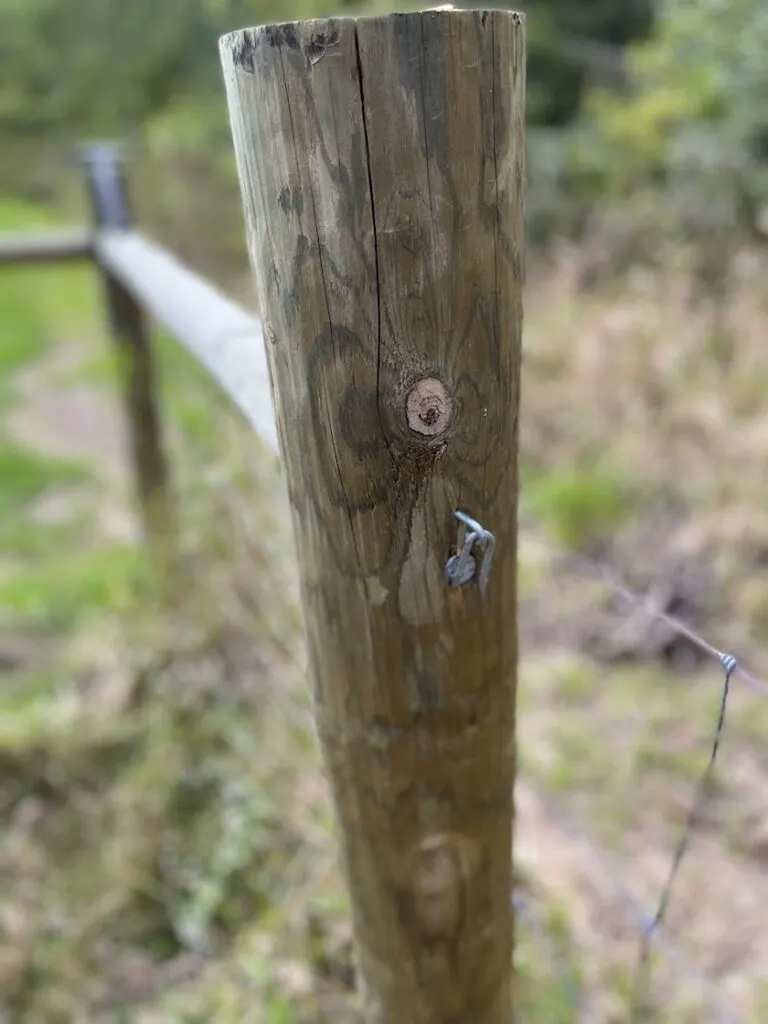
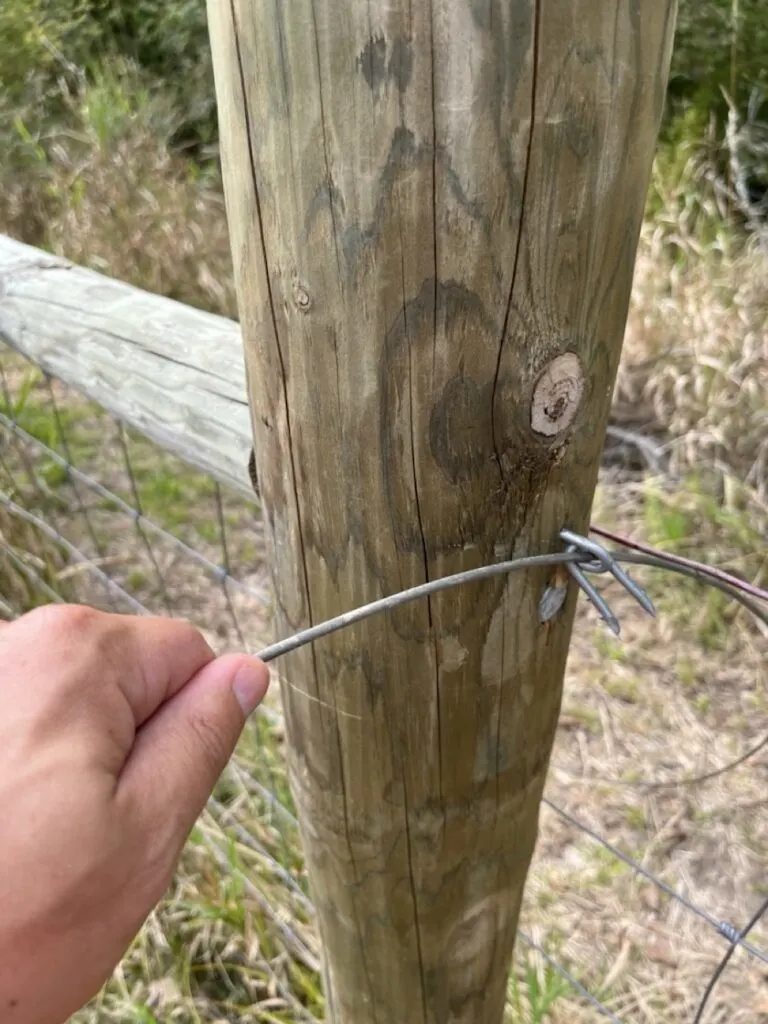
Much like my ice skating, my use of the two staple method could use some work. I had mixed success with it, but overall it did work better than tightening against the bare post.
Once you have the wire wrapped at least twice around the posts you want to feed one end through the non-ratcheting side of your strainer and leave plenty to make a knot.
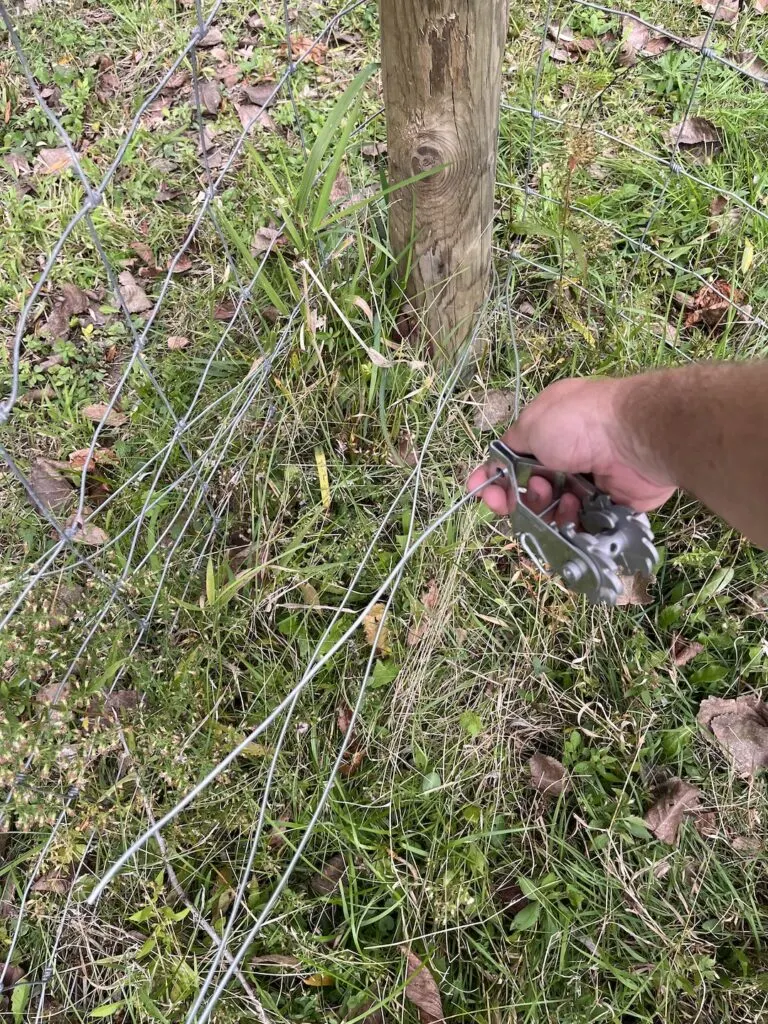
You want to take that long tail, make a loop and feed it through and then wrap the rest as tightly as possible around the wire. The thicker the wire you use, the hard it will be.
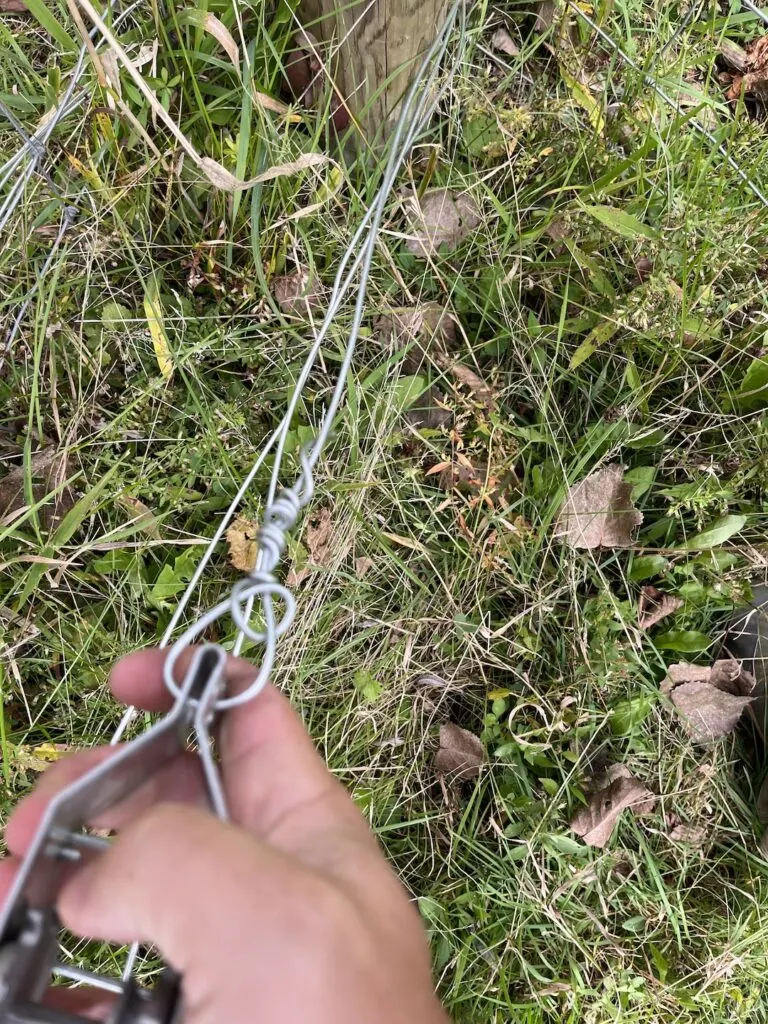
But the good news is that once you get some tension on it, it should tighten right up.
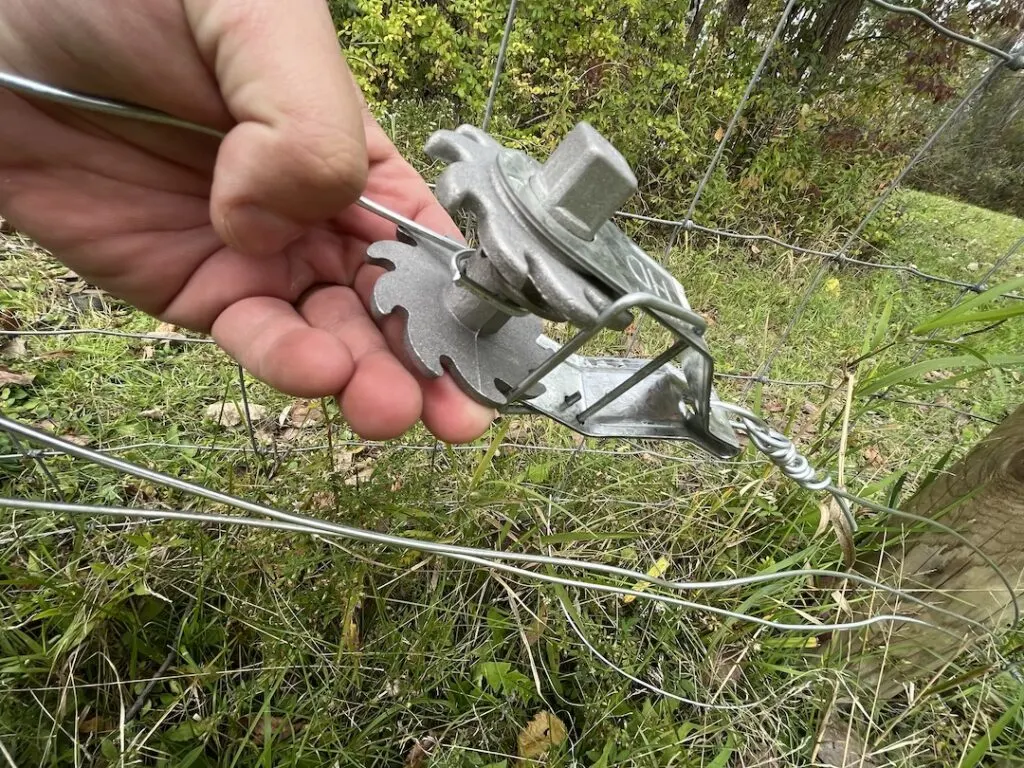
I had two sets of wire on hand so I tried both. The nine gauge wire I used first was beefy. So beefy that it was difficult to get it tight and I broke one of the strainers using it.
The twelve gauge wire was much more flexible, easy to get into shape and tighten but it also snapped on me once.
I also had two different strainers I used. The first you ratchet with the forked end. Embarassingly I didn’t understand that the prominent square on the side of the strainer fit perfectly in the square cut out of the handle for the second type.
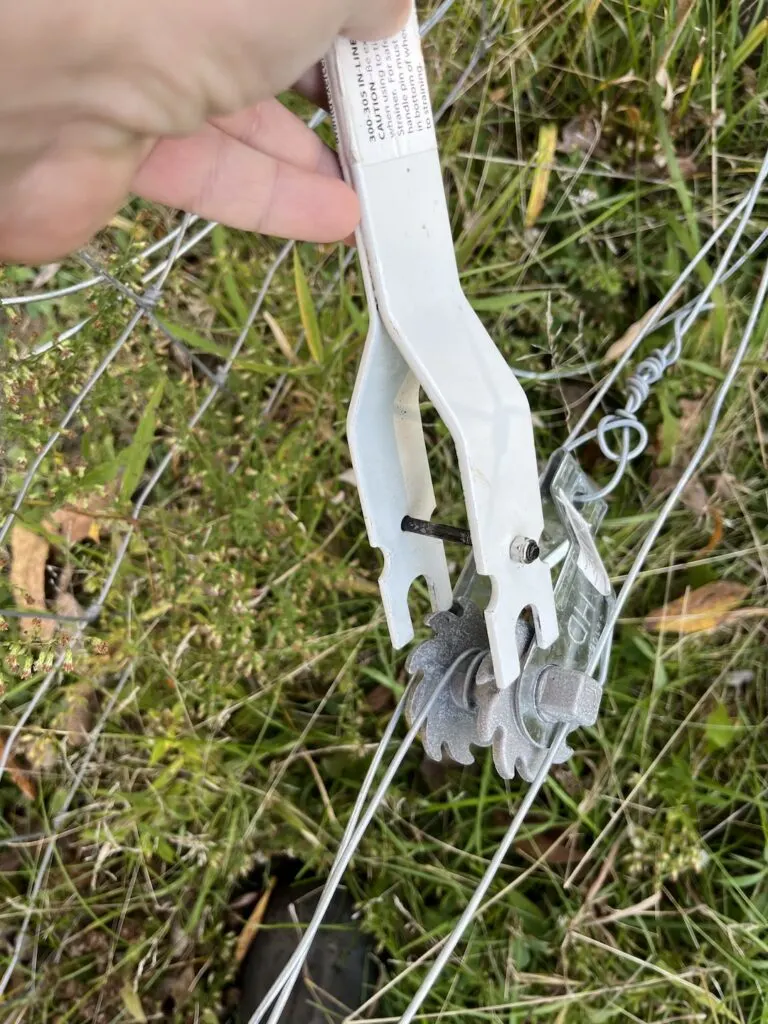
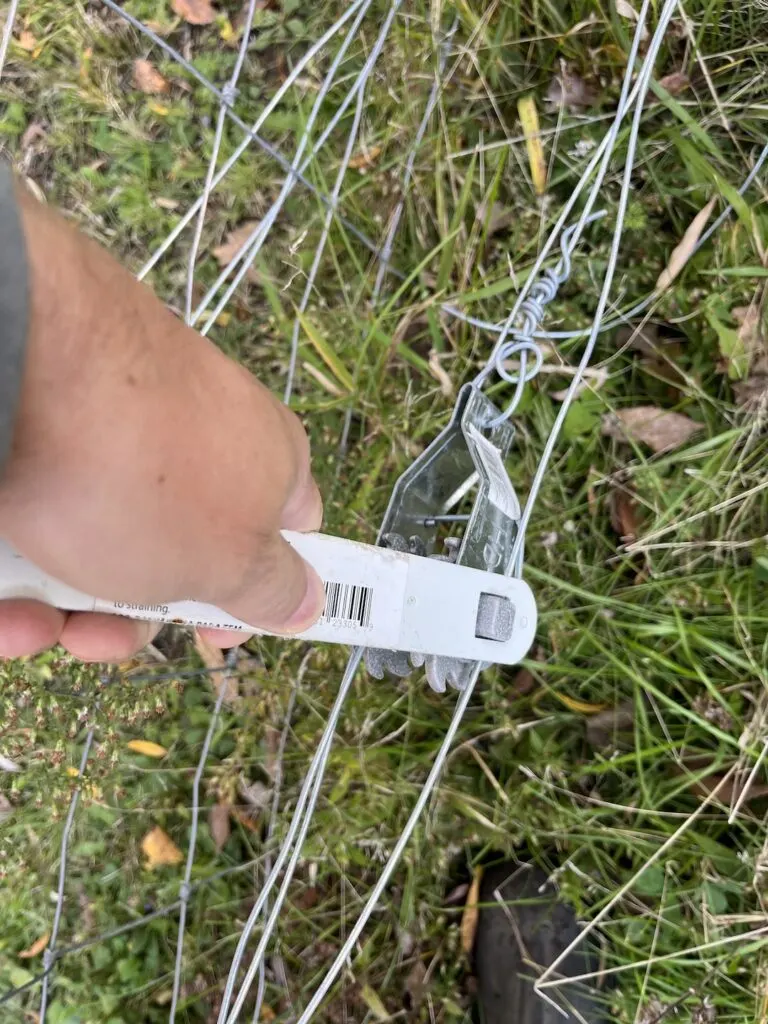
I may have spent far too long putting a square peg into a round fork.
Quick story: In high school I took the Armed Services Vocational Aptitude Battery test. I wasn’t particularly interested in taking it but it got me out of class I think? There are multiple pratical sections like mechnical, electrical along with some traditional academic ones. The point is to recommend a role in the military that you might be best suited for.
My academic scores were nearly perfect, I think as high as you could score. I scored so poorly on the practical ones that my recommended job in the military was to be a student. They were like: Uh, no thanks Ben, we’re good.
I often think about that, especially when something like that tool bests me.
However, I was not bested for long and despite breaking wires, breaking strainers and at least one sheep slipping out of the gate during the process, I did manage to get the fence corners braced.
The benefit of using the strainers is that I can come back and re-tighten these should they ever start to get loose.
